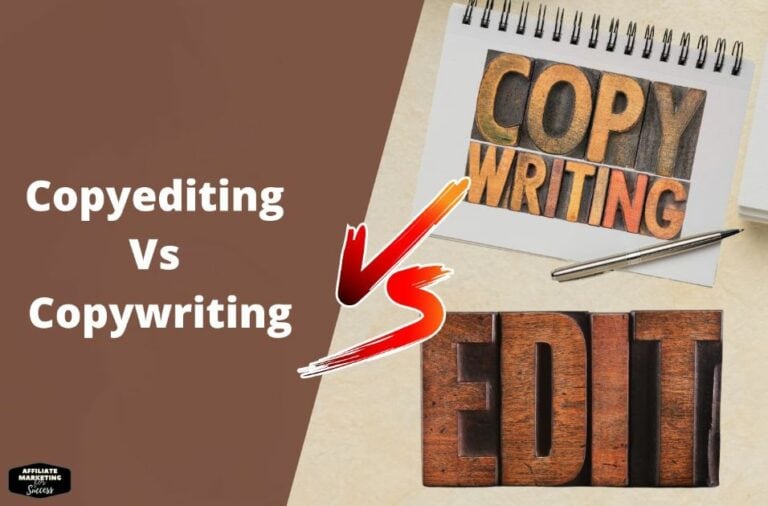Crafting a Winning Content Strategy: A Step-by-Step Guide
Did you know 70% of marketers use content marketing? But only 32% have a clear plan. I’m here to help you make a winning content strategy for your brand.
Content marketing is more than just blog posts or social media. It’s about building your online presence and connecting with your audience. A good plan can increase engagement, drive traffic, and boost conversions.
In today’s digital world, a solid content plan is key. It keeps you consistent, aligns with your goals, and helps you measure success. Let’s explore the essential parts of a winning content strategy for your brand.
Great content strategies begin with brainstorming. This lets teams think freely and come up with new ideas. By getting everyone involved, you foster open communication and teamwork, which are vital for success1.
People are more likely to support a plan they helped create. This shows why it’s important to include your team in brainstorming1. Tools like AI Meeting Assistants can make brainstorming more efficient. They help you keep track of ideas and stay organized1.
- A documented content strategy is crucial for success
- Involve your team in brainstorming for better results
- Use digital tools to enhance content planning efficiency
- Align your content strategy with business goals
- Measure and adapt your strategy based on performance
Introduction
A content strategy is key to any good content marketing plan. I’ll show you what it’s all about and why it’s important for your business.
What is a content strategy and why do you need one?
A content strategy is like a map for your content. It tells you how to make, share, and manage content to meet your goals. It’s more than just writing blog posts. It’s about making a plan that fits your brand and speaks to your audience.
Benefits of a strong content strategy
A good content strategy can really help your brand. It makes you more known and can increase your profits. It also helps you connect with people, making them more loyal to your brand. Companies with strong strategies see more traffic, sometimes up to 30% more2.
Key elements of a successful content strategy
A successful strategy has a few important parts. These are:
- Clear goals and objectives
- Detailed audience personas
- Content calendar and distribution plan
- SEO optimization
- Performance metrics and analysis
By focusing on these, you’ll make a strategy that works well. It will help you engage with your audience and show real results. A good strategy changes as your business and audience do, helping you succeed over time.
| Element | Purpose | Impact on Strategy |
|---|---|---|
| Goals and Objectives | Define direction | Guides content creation and KPIs |
| Audience Personas | Understand target audience | Tailors content to specific needs |
| Content Calendar | Organize content production | Ensures consistent publishing |
| SEO Optimization | Improve visibility | Increases organic traffic |
| Performance Analysis | Measure effectiveness | Informs strategy refinement |
Chapter 1: Defining Your Target Audience

In content creation, knowing your audience is key. I’ll guide you through understanding your ideal reader. We’ll do thorough research and create detailed buyer personas. This ensures your content hits the mark every time.
Understanding Your Ideal Reader
To craft content that resonates, I start by painting a clear picture of my ideal reader. I dive deep into demographics, psychographics, and behavior patterns. By analyzing these factors, I can tailor my content to meet specific needs and preferences.
Conducting Audience Research
Effective target market analysis involves various research methods. I use surveys to gather direct feedback, tap into social media analytics for behavioral insights, and study competitor strategies. This comprehensive approach helps me understand my audience’s pain points, goals, and content consumption habits.
| Research Method | Benefits | Insights Gained |
|---|---|---|
| Surveys | Direct feedback | Preferences, challenges |
| Social Media Analytics | Real-time data | Engagement patterns, interests |
| Competitor Analysis | Market positioning | Content gaps, audience overlaps |
Creating Buyer Personas
The final step in my customer profiling process is creating detailed buyer personas. These fictional representations of ideal customers guide my content creation. I include demographics, goals, challenges, and preferences in each persona. This level of detail ensures my content speaks directly to my target audience, increasing engagement and conversions.
By focusing on market segmentation, I can create content that truly resonates with specific audience segments. This targeted approach leads to higher engagement rates and more effective content strategies3.
Chapter 2: Conducting Keyword Research
Keyword research is key to SEO. I’ll show you how to pick the best keywords for your content.
Identifying relevant keywords for your niche
Begin by thinking of topics linked to your business. Consider what your audience might search for. Google’s autocomplete can help find long-tail keywords. These have less competition and attract specific visitors.
Using keyword research tools
Tools like SEMrush and Ahrefs are great for keyword analysis. They give info on search volume, keyword difficulty, and related terms. It’s smart to try both to see which works best for you.
Understanding search intent
Knowing why people search is important. Are they looking for info, to buy something, or a specific site? Matching your content to their intent can boost your search ranking.
Keyword research is more than finding popular terms. It’s about finding chances to offer value to your audience while pleasing search engines. Aim for a mix of common keywords and specific long-tail phrases for a strong SEO plan4.
Chapter 3: Planning Your Content Calendar

A good content calendar is essential for success. It keeps me organized and ensures I post valuable content regularly. Let’s explore how to make a great editorial calendar.
Choosing Content Formats
I pick different content types to keep my audience interested. Blog posts, videos, and infographics are great choices. For example, I might turn a blog post into an infographic for those who learn better visually.
Mapping Out Content Topics
I come up with topics based on keyword research and what my audience likes. I list them by theme or category. This way, I cover all important topics in my niche.
Creating a Content Calendar
I use tools like Trello or Asana for my content calendar. They help me see my schedule, assign tasks, and track my progress. Here’s what my calendar looks like:
| Date | Content Type | Topic | Keywords | Status |
|---|---|---|---|---|
| Oct 1 | Blog Post | 5 Tips for Effective Content Planning | content strategy, planning | Draft |
| Oct 8 | Video | How to Use Trello for Content Management | project management, Trello | In Progress |
| Oct 15 | Infographic | Content Types: Pros and Cons | content types, formats | Planned |
By using this method, I make sure I always have quality content. It meets my content strategy goals.
Chapter 4: Creating High-Quality Content
Creating great content is key for a good content strategy. I’ll share tips on making engaging content. This will help you connect with your audience.
Writing Engaging and Informative Content
To grab readers’ attention, offer value. Use simple language and examples. Talk about what your audience needs.
Use stories to make your content stick. This makes it more relatable and easy to remember.
Optimizing Your Content for SEO
SEO writing is more than just using keywords. Use keywords naturally and optimize your meta descriptions. Use clear headers too.
By using 17 SEO tips, you can see a 22.71% increase in traffic5. Create content that people want to link to. This can lead to more traffic than other types of content5.
Repurposing Your Content for Different Platforms
Using your content on different platforms can help more people see it. Turn blog posts into infographics, videos, or podcasts. Videos can make people stay longer on your site5.
Change your content for social media. This way, you can reach more people.
| Content Type | Platform | Benefits |
|---|---|---|
| Blog Posts | Website, Medium | SEO boost, in-depth information |
| Infographics | Pinterest, Instagram | Visual appeal, easy sharing |
| Videos | YouTube, TikTok | Engagement, lower bounce rates |
| Podcasts | Spotify, Apple Podcasts | On-the-go consumption, new audience reach |
By focusing on these content creation tips, you’ll build a strong content strategy. Remember, being consistent is important. It helps you make content that works well.
Chapter 5: Promoting Your Content

Creating great content is just half the battle. To make it work, you need a good plan to share it. Let’s look at ways to get your content seen by the right people.
Social media marketing for content promotion
A smart social media plan is key. Sharing on Facebook, Twitter, and LinkedIn can really help. Here’s how to do it well:
- Tailor your posts to each platform’s unique audience
- Use eye-catching visuals to grab attention
- Engage with your followers to build a community
Email marketing for content distribution
Emails are still a great way to reach people directly.
Here’s how to make them work:
- Segment your email list for better content delivery
- Write catchy subject lines to get more opens
- Include clear calls-to-action in each email
Paid advertising for content reach
PPC ads can help your content reach more people. Here’s how to use them well:
- Use Google Ads to target specific keywords
- Leverage social media ads for precise targeting
- Retarget visitors who’ve shown interest in your content
By using these strategies together, you’ll have a strong plan to share your content. Remember, keep at it. Sites like ILLUMINATION have published over 1.5 million stories and had 50,000 featured by curators6. Their success comes from using many ways to share content.
| Promotion Channel | Key Benefits | Best Practices |
|---|---|---|
| Social Media | Wide reach, audience engagement | Post consistently, use hashtags, engage with followers |
| Email Marketing | Direct communication, high ROI | Personalize content, A/B test subject lines |
| PPC Advertising | Targeted reach, measurable results | Set clear goals, monitor and adjust campaigns |
With these plans, you’re ready to make your content have a big impact. You’ll reach your audience in a powerful way.
Chapter 6: Analyzing Your Content Performance

In the world of content marketing, measuring success is key. Using content analytics and performance metrics is crucial. This helps with data-driven marketing and ROI measurement. Let’s dive into how you can track and improve your content strategy.
Using Google Analytics to Track Content Metrics
Google Analytics is a powerful tool for tracking content performance. I use it to monitor page views, time on page, and bounce rates. These metrics help me understand which topics resonate with my audience.
For example, I noticed that articles about content analytics tend to have higher engagement rates7.
Understanding Key Content Metrics
Traffic, engagement, and conversions are vital performance metrics. I pay close attention to:
- Unique visitors
- Time spent on page
- Social shares
- Conversion rates
By tracking these, I can see which content drives the most value. For instance, I found that long-form guides about ROI measurement typically lead to more email sign-ups8.
Adapting Your Content Strategy Based on Data
Data-driven marketing is all about using insights to refine your approach. I regularly review my content performance and adjust my strategy accordingly. If I see that video content about performance metrics gets more engagement, I’ll create more of it.
This adaptive approach helps me continually improve my content’s ROI.
Remember, analyzing your content performance isn’t a one-time task. It’s an ongoing process that helps you stay aligned with your audience’s needs and preferences. By consistently using these tools and metrics, you’ll be able to craft a more effective, data-driven content strategy.
Conclusion
I’ve shared the main steps for making a winning content strategy. Now, let’s quickly go over why being consistent and flexible is key for success in content marketing.
Recap of Key Steps
To make a strong content strategy, I first figure out who my audience is and do deep keyword research. Then, I plan out my content calendar, focusing on making high-quality stuff. Finally, I promote and analyze my content’s performance. By doing these steps, I set myself up for success in content marketing.
Importance of Consistency and Adaptation
Being consistent in publishing keeps my audience interested and builds trust. But I don’t just follow the same plan all the time. I’m also ready to change my strategy based on how well it’s doing. This way, I keep improving my content marketing.
Resources for Further Learning
To keep improving, I check out industry blogs, webinars, and online courses. These help me get better at implementing my strategy and stay current with trends. By learning more, I can get even better at content marketing and get better results.
Learn more about creating a winning content strategy to take your brand to the next level.
Source Links
- https://krisp.ai/blog/what-is-the-purpose-of-brainstorming-during-the-development-of-an-action-plan/
- https://www.searchenginejournal.com/when-in-your-digital-marketing-journey-should-you-start-doing-schema-markup/527272/
- https://www.nature.com/articles/s41467-024-53145-0
- https://www.mdpi.com/1422-0067/25/20/11031
- https://backlinko.com/improve-your-seo
- https://medium.com/illumination-curated/handpicked-eclectic-stories-for-avid-readers-from-inspiring-writers-11-486cc09ea200
- https://www.nature.com/articles/s41566-024-01546-4
- https://www.nature.com/articles/s41467-024-52447-7
I’m Alexios Papaioannou, an experienced affiliate marketer and content creator. With a decade of expertise, I excel in crafting engaging blog posts to boost your brand. My love for running fuels my creativity. Let’s create exceptional content together!






